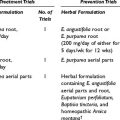K
KAYA
| Other Common Name: | Kava kava |
| Botanical Name: | Piper methysticum |
| Family: | Piperaceae |
| Plant Part Used: | Root (rootstock) |
PRESCRIBING INFORMATION
| Actions | Anxiolytic, hypnotic, anticonvulsant, mild sedative, skeletal muscle relaxant, spasmolytic, local anesthetic, mild analgesic, antipruritic (topically) | |
| Potential Indications | ||
* Kava has also been used in traditional herbal medicine for treating insomnia. (6)
** This dose range is extrapolated from British Pharmaceutical Codex 1934, the British Herbal Pharmacopoeia 1983, and the author’s education and experience.
SUPPORTING INFORMATION
Except when specifically referenced, the following book was referred to in the compilation of the pharmacologic and clinical informationMills S, Bone K. Principles and Practice of Phytotherapy: Modern Herbal Medicine. Edinburgh: Churchill Livingstone, 2000.
1 Pittler MH, Ernst E. J Clin Psychopharmacol. 2000;20:84-89.
2 Spillane PK, Fisher DA, Currie BJ. Med J Aust. 1997;167(3):172-173.
3 Young MC, et al. Med J Aust. 1999;170(9):425-428.
4 Mathews JD, et al. Med J Aust. 1988;148(11):548-555.
5 Stoller R. Schweiz Arztezeit. 2000;81(24):1335-1336.
6 Stafford N. Germany may ban kava kava herbal supplement, Yahoo News. URL: http://dailynews.yahoo.com, Nov 19, 2001.
7 Russmann S, Lauterburg BH, Helbling A. Ann Intern Med. 2001;135(1):68-69.
8 Felter HW, Lloyd JU. King’s American dispensatory, ed 18. Portland: Eclectic Medical Publications, 1905. rev 3, reprinted 1983
9 British Herbal Medicine Association’s Scientific Committee. British herbal pharmacopoeia. Bournemouth: BHMA, 1983.
10 Titcomb M. J Polynes Soc. 1948;57:105-171.
11 Lebot V, Merlin M, Lindstrom L. Kava—the Pacific elixir: the definitive guide to its ethnobotany, history and chemistry. New Haven: Yale University Press, 1992.
12 Cambie RC, Ash J. Fijian medicinal plants. Melbourne, Australia: CSIRO Publishing, 1994.
13 World Health Organization. Medicinal plants in the South Pacific. Manilla: WHO Regional Office for the Western Pacific, 1998.
14 Volz HP, Kieser M. Pharmacopsychiatry. 1997;30:1-5.
15 Neuhaus W, et al. Zentralbl Gynakol. 2000;122(11):561-565.
16 Watkins LL, Connor KM, Davidson JRT. J Psychopharmacol. 2001;15(4):283-286.
17 Wheatley D. Human Psychopharmacol. 2001;16(4):353-356.
18 De Leo V, et al. Maturitas. 2001;39(2):185-188.
19 Foo H, Lemon J. Drug Alcohol Rev. 1997;16:147-155.
20 Steiner GG. Hawaii Med J. 2000;59(11):420-422.
21 Blumenthal M, et al, editors. The complete German Commission E monographs: therapeutic guide to herbal medicines. Austin: American Botanical Council, 1998.
KOREAN GINSENG
| Botanical Name: | Panax ginseng |
| Family: | Araliaceae |
| Plant Part Used: | Root |
PRESCRIBING INFORMATION
| Actions | Adaptogenic, tonic, immune modulating, cardiotonic, male tonic, cancer preventative, cognition enhancing | |
| Potential Indications |
Based on appropriate evaluation of the patient, practitioners should consider prescribing Korean ginseng in formulations in the context of:
• Improving physical and mental performance and well being; improving general performance under stress (2,4,5)
|
|
* This dose range is also extrapolated from British Herbal Pharmacopoeia 1983, the British Herbal Compendium 1992, and from clinical trials.
SUPPORTING INFORMATION
Except when specifically referenced, the following book was referred to in the compilation of the pharmacological and clinical informationMills S, Bone K. Principles and Practice of Phytotherapy: Modern Herbal Medicine. Edinburgh: Churchill Livingstone, 2000.
1 Zhu M, et al. J Pharm Pharmacol. 1999;51:175-180.
2 Pharmacopoeia Commission of the People’s Republic of China. Pharmacopoeia of the People’s Republic of China, English ed. Beijing: Chemical Industry Press, 1997.
3 Bensky D, Gamble A. Chinese herbal medicine materia medica. Seattle: Eastland Press, 1986.
4 British Herbal Medicine Association. British herbal compendium. Bournemouth: BHMA, 1992.
5 British Herbal Medicine Association’s Scientific Committee. British herbal pharmacopoeia. Bournemouth: BHMA, 1983.
6 Felter HW, Lloyd JU. King’s American dispensatory, ed 18. Portland: Eclectic Medical Publications, 1905. rev 3, reprinted 1983
7 Attele AS, Wu JA, Yuan CS. Biochem Pharmacol. 1999;58(11):1685-1693.
8 Wesnes KA, et al. Psychopharmacology. 2000;152(4):353-361.
9 Kennedy DO, Scholey A, Wesnes KA. Phytomed. 2000;7(supp 2):105.
10 Gundling K, et al. Altern Ther Health Med. 2001;7(3):104.
11 Scaglione F, Weiser K, Alessandria M. Clin Drug Invest. 2001;21(1):41-45.
12 Tode T, et al. Int J Gynaecol. 1999;67:169-174.
13 Wiklund IK, et al. Int J Clin Pharmacol Res. 1999;19(3):89-99.
14 Yun TK, Choi SY, Lee YS: Second International Cancer Chemo Prevention Conference, Berlin, April 28-30, 1993.
15 Yun TK, Choi SY. Proc Annu Meet Am Assoc Cancer Res. 1996;37:1906.
16 Lee BM, Lee SK, Kim HS. Cancer Lett. 1998;132(1-2):219-227.
17 Han KH, et al. Am J Chin Med. 1988;26:199-209.
18 Sung J, et al. Am J Chin Med. 2000;28(2):205-216.
19 Blumenthal M, et al, editors. The complete German Commission E monographs: therapeutic guide to herbal medicines. Austin: American Botanical Council, 1998.



